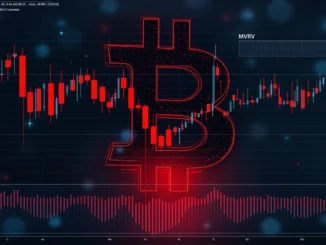
Ever wondered just how much of the stablecoin action happens on the world’s largest crypto exchange? Recent figures shared by Binance CEO Richard Teng paint a clear picture: Binance holds a significant majority of the stablecoin reserves across centralized crypto exchanges (CEXs). This isn’t just a minor lead; it’s a commanding position that highlights Binance’s central role in the stablecoin ecosystem. Understanding these Binance stablecoin reserves is key to grasping the current landscape of crypto trading and liquidity.
Binance Stablecoin Reserves: The Astonishing Numbers
According to data cited by Binance CEO Richard Teng from blockchain analytics firm CryptoQuant, Binance is home to roughly 59% of all stablecoin reserves held on centralized exchanges. This translates to a staggering amount, totaling around $31 billion. Think about that for a moment – more than half of all stablecoins sitting on CEX order books globally are reportedly held on a single platform.
This figure isn’t just an interesting statistic; it has real implications for market liquidity, trading volume, and the overall health of the crypto market. The concentration of such massive Binance stablecoin reserves means that a significant portion of the capital available for trading and market making is centered on one exchange.
Why Does Stablecoin Market Share Matter?
Stablecoins are the lifeblood of crypto trading, acting as a bridge between volatile cryptocurrencies and traditional fiat currencies. They provide stability, enable quick transfers, and are used in countless trading pairs. The distribution of stablecoin market share across different platforms is a crucial indicator of where trading activity and liquidity are concentrated.
A high stablecoin market share on a particular exchange suggests:
- High trading volume and activity on that platform.
- Deep liquidity pools for various trading pairs involving stablecoins.
- User preference or trust in the exchange for holding and trading stable assets.
Binance’s dominant stablecoin market share underscores its position as the go-to venue for many traders and institutions looking to move in and out of crypto positions using stablecoins.
Centralized Crypto Exchanges: The Hub for Stablecoins
While decentralized finance (DeFi) has grown, centralized crypto exchanges (CEXs) like Binance remain the primary gateway for most users entering the crypto space and the main venue for spot trading. CEXs offer convenience, speed, and familiar trading interfaces.
Stablecoins are particularly important for centralized crypto exchanges because they:
- Provide stable trading pairs against volatile assets like Bitcoin and Ethereum.
- Allow users to ‘cash out’ into a stable asset without leaving the crypto ecosystem.
- Facilitate arbitrage opportunities between different exchanges.
- Serve as collateral in some trading products.
The fact that Binance holds such a large percentage of stablecoins on centralized crypto exchanges highlights its critical infrastructure role in facilitating global crypto trading.
What the CryptoQuant Data Tells Us
CryptoQuant is a well-regarded blockchain analytics firm that provides on-chain data and market indicators. Their data often gives insights into exchange reserves, fund flows, and other key metrics used by traders and analysts to understand market movements and participant behavior.
The CryptoQuant data cited by CEO Richard Teng specifically focuses on stablecoin reserves held on CEX platforms. This type of data is valuable because it offers a glimpse into the operational liquidity and potential trading power available on different exchanges. The confirmation from Binance’s CEO lends further weight to the figure, emphasizing its significance from the exchange’s perspective.
Implications of Binance’s CEX Dominance
Binance’s CEX dominance in stablecoin reserves has several implications for the broader crypto market:
For Traders:
- Deep liquidity for stablecoin pairs on Binance.
- Potentially tighter spreads and better execution prices for stablecoin-related trades.
For the Market:
- Highlights the continued importance of centralized platforms despite DeFi growth.
- Suggests Binance’s significant influence on stablecoin market dynamics.
Potential Concerns:
- Centralization risk: A large concentration of assets on one platform could pose systemic risks if that platform faces technical issues, security breaches, or regulatory challenges.
- Regulatory scrutiny: High market share often attracts increased attention from regulators globally.
The figure underscores Binance’s position not just as an exchange, but as a major liquidity provider and central hub within the stablecoin ecosystem, reinforcing its Binance CEX dominance.
Looking Ahead: The Future of Stablecoins and CEXs
While Binance currently holds a dominant position, the stablecoin landscape is constantly evolving. New stablecoin issuers, regulatory developments, and the growth of DeFi platforms could shift the balance over time. However, for now, centralized exchanges, led by Binance, remain the primary custodians of stablecoin reserves used for active trading.
Monitoring the flow of stablecoins on and off exchanges, as provided by firms like CryptoQuant, will continue to be a key way to gauge market sentiment and liquidity shifts. Binance’s ability to maintain or grow its share will depend on its ability to navigate regulatory environments, innovate its platform, and continue attracting user trust.
Conclusion
The data shared by Binance CEO Richard Teng, powered by CryptoQuant analytics, clearly demonstrates Binance’s commanding lead in stablecoin reserves among centralized exchanges. Holding nearly 60% of these vital assets, totaling $31 billion, solidifies Binance’s position as a central pillar of the global crypto trading infrastructure. While this Binance CEX dominance offers benefits like deep liquidity, it also highlights the concentration risk inherent in the current market structure. As the crypto space matures, the distribution of stablecoin reserves will remain a critical metric to watch, reflecting shifts in trading behavior, platform preferences, and the ongoing evolution of both centralized and decentralized finance.



